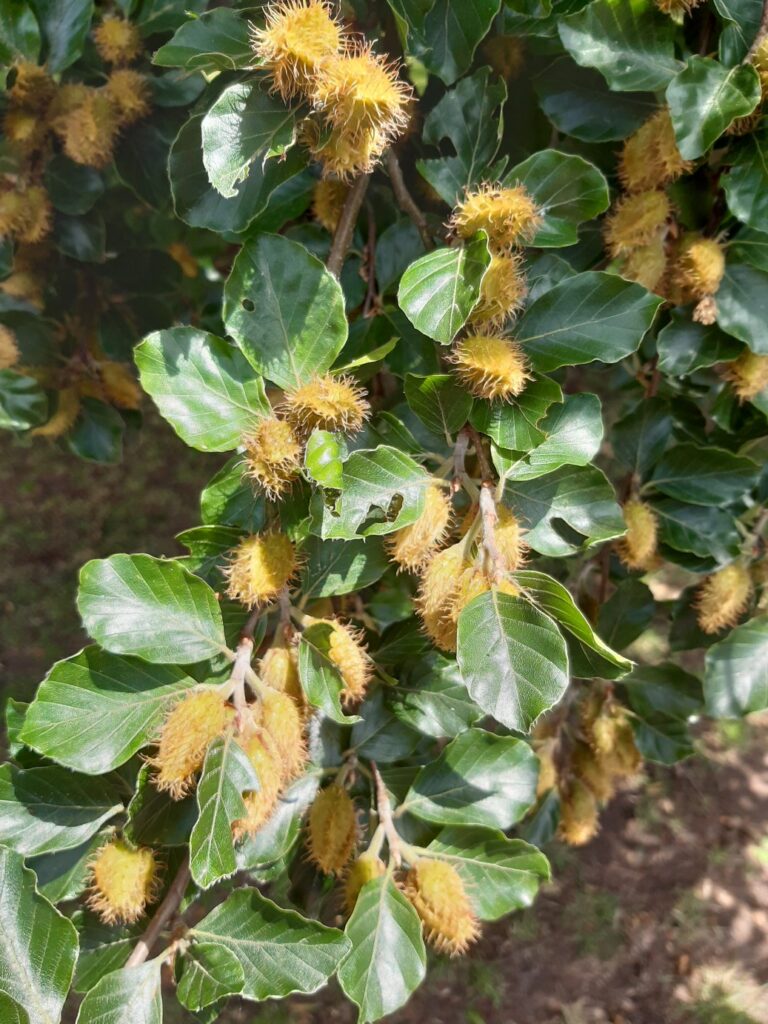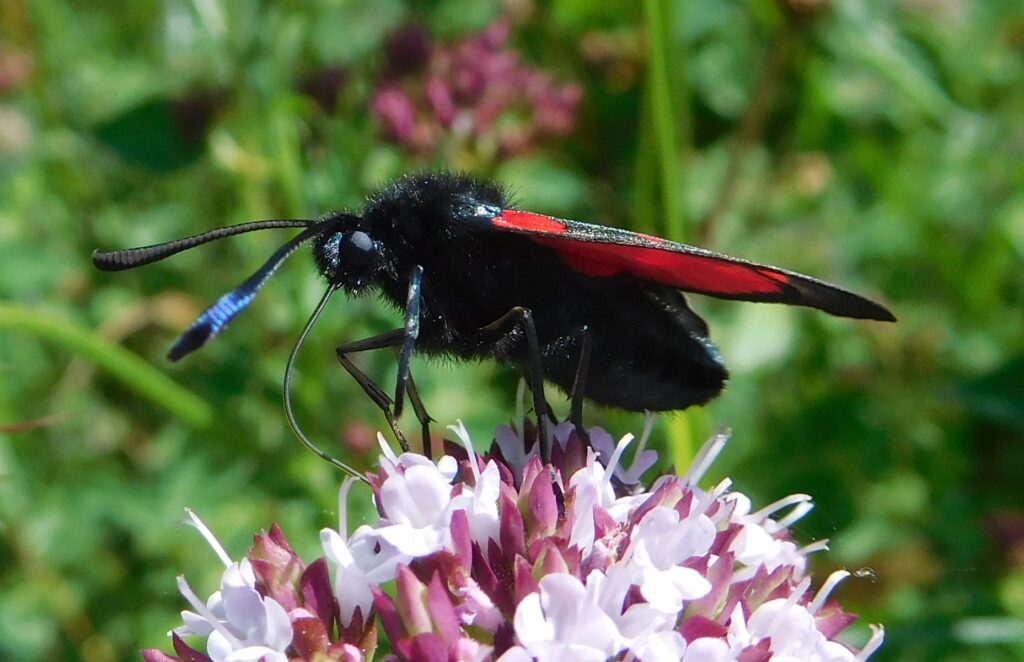
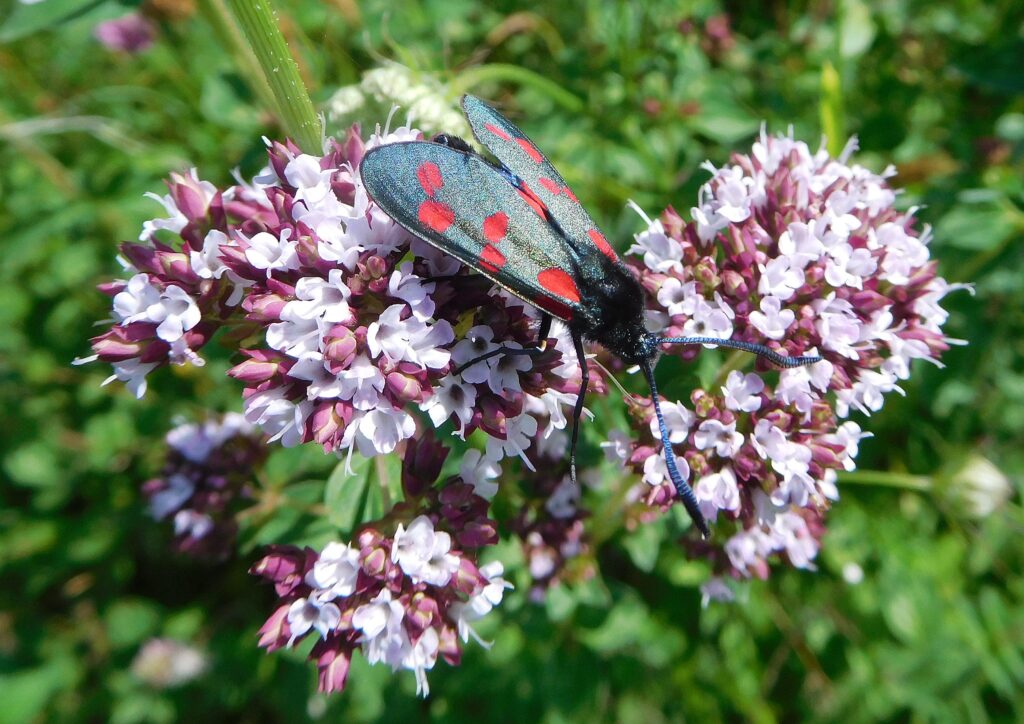
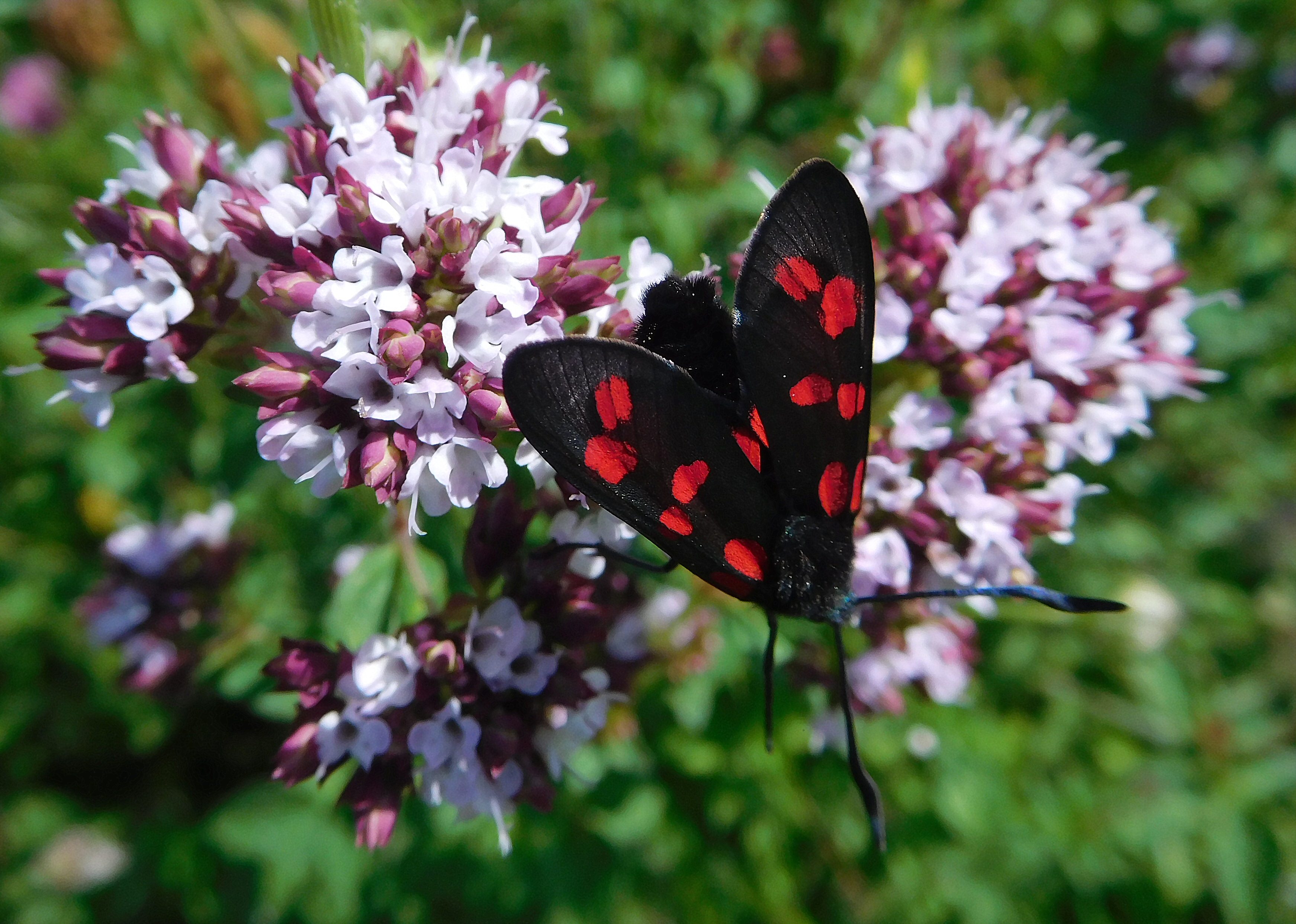
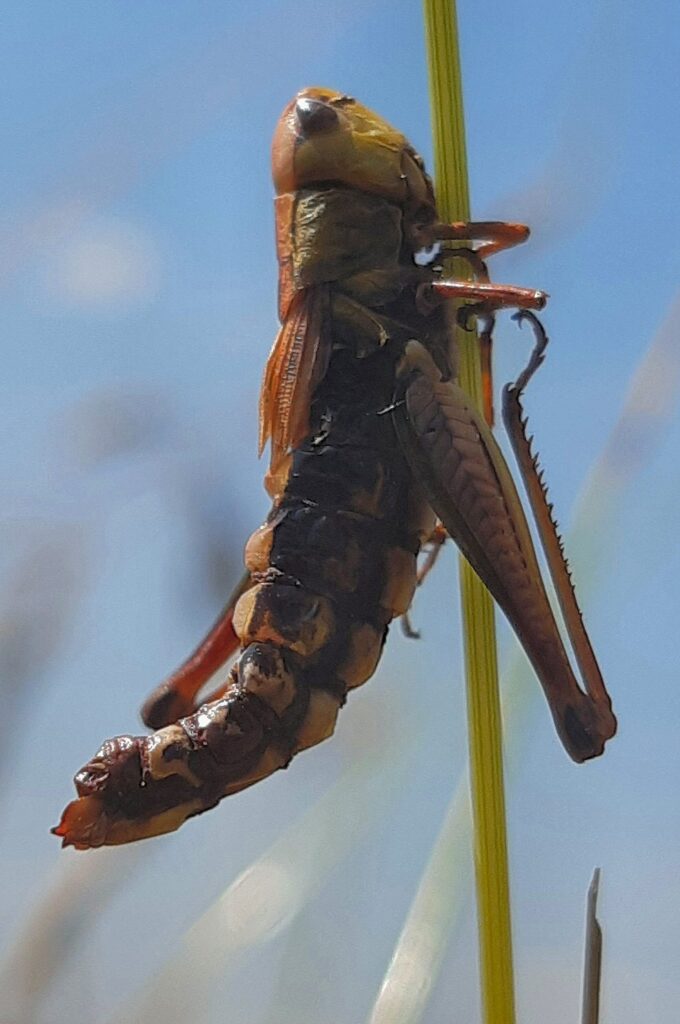


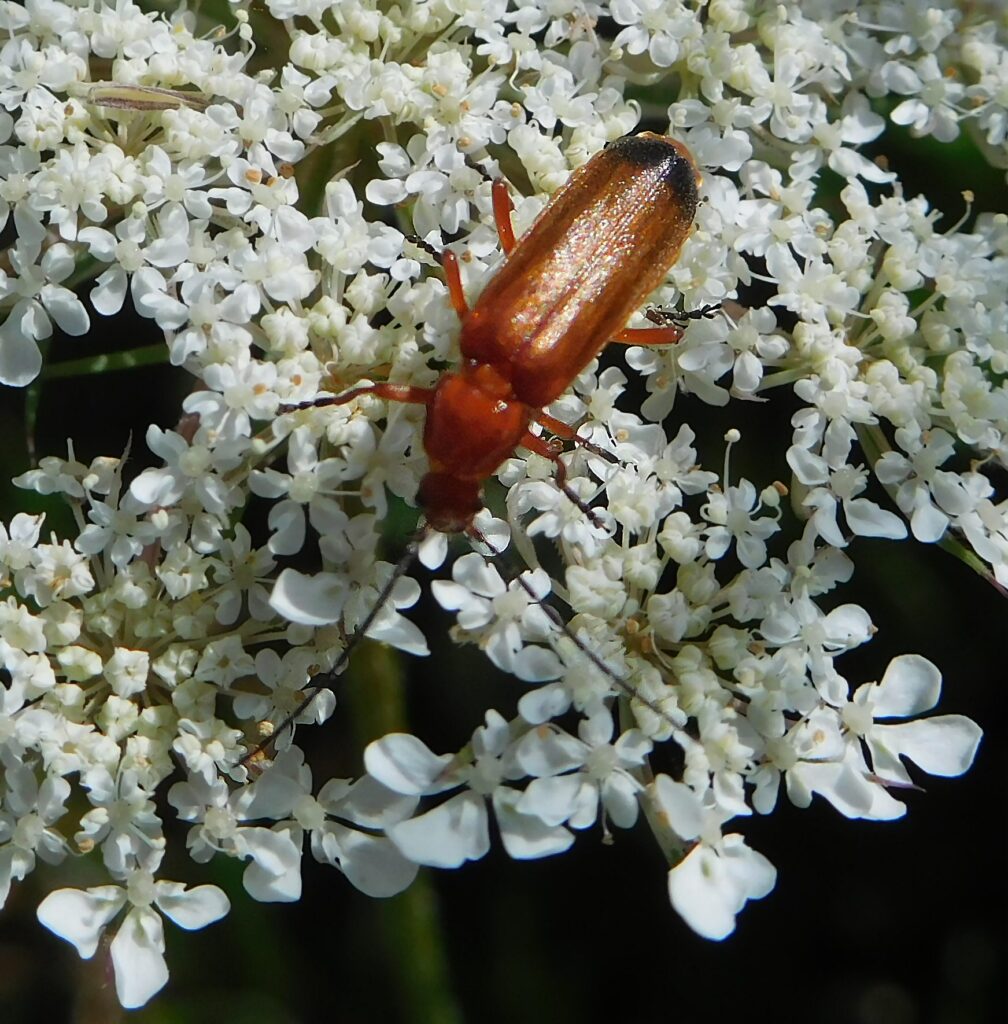
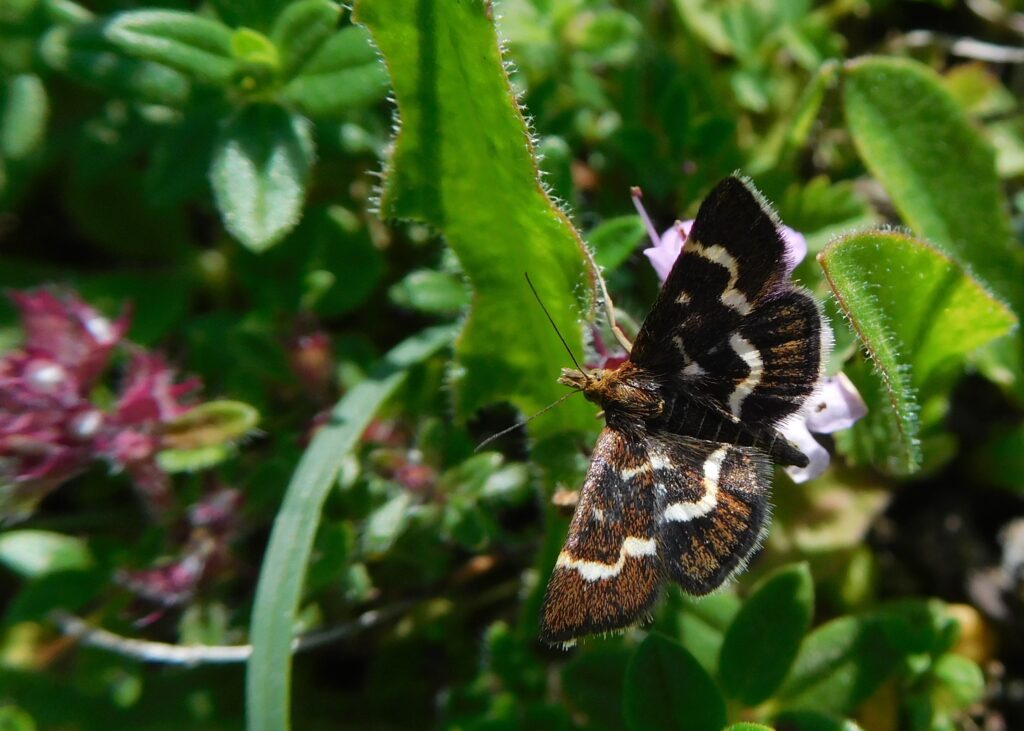
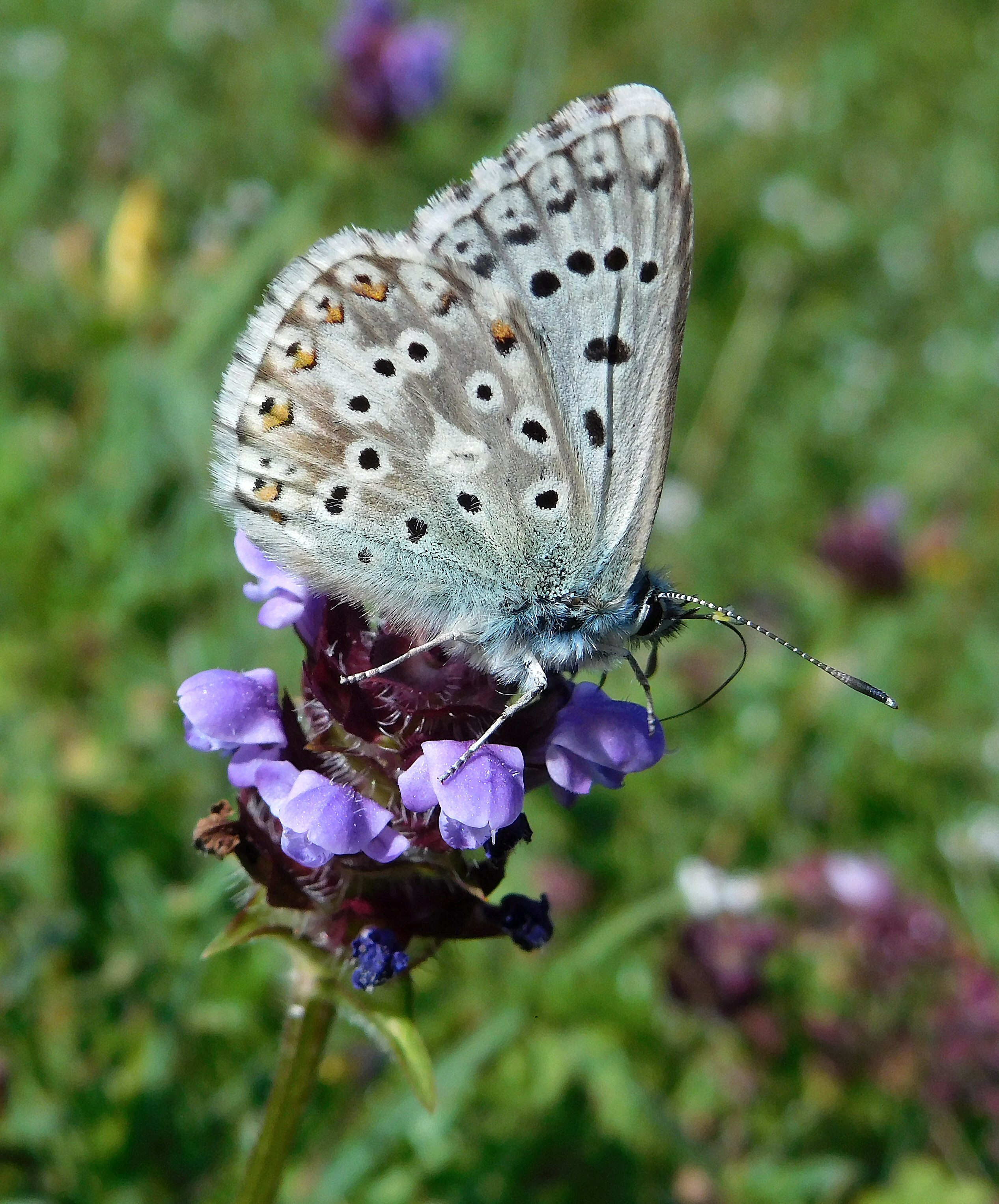
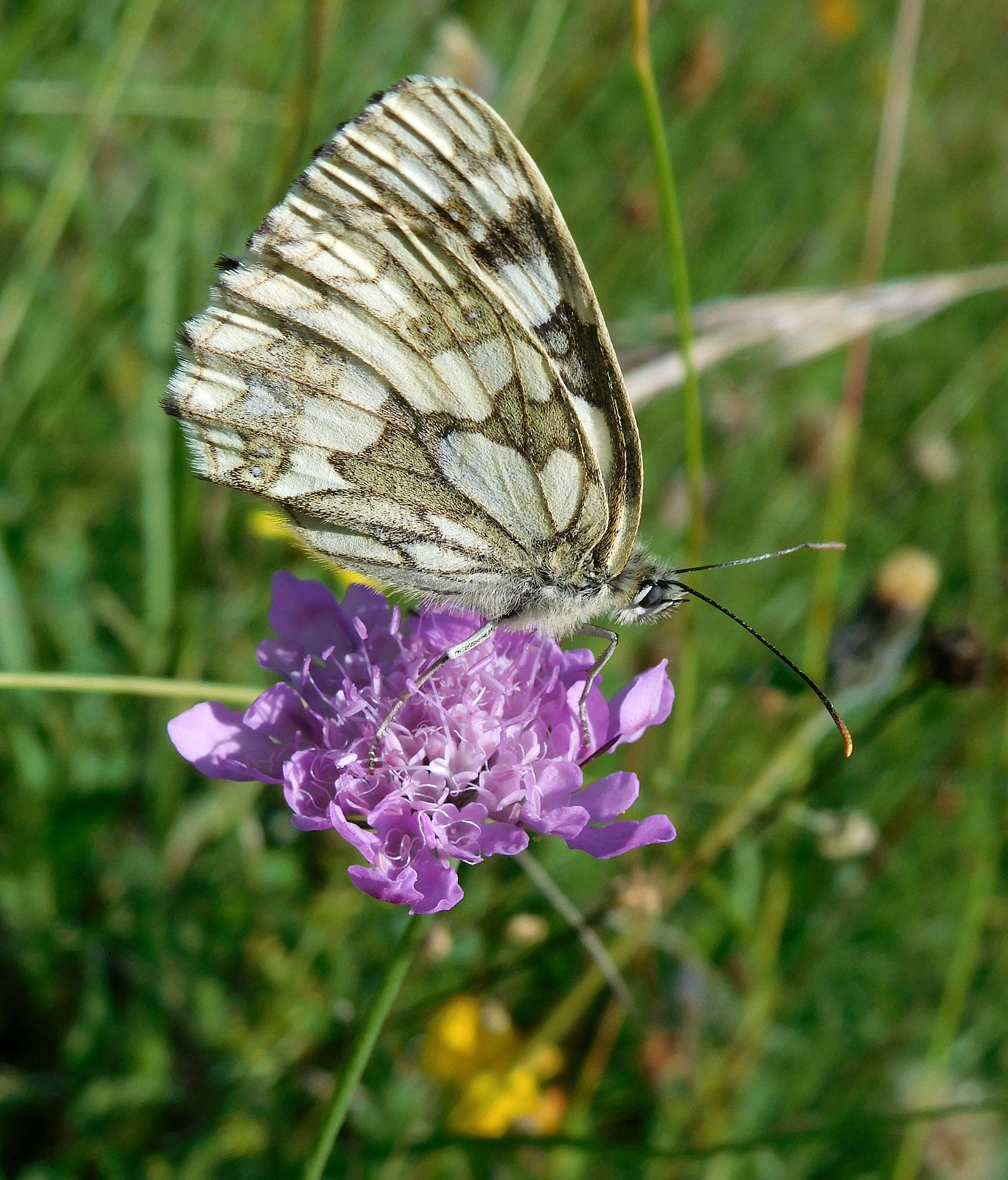
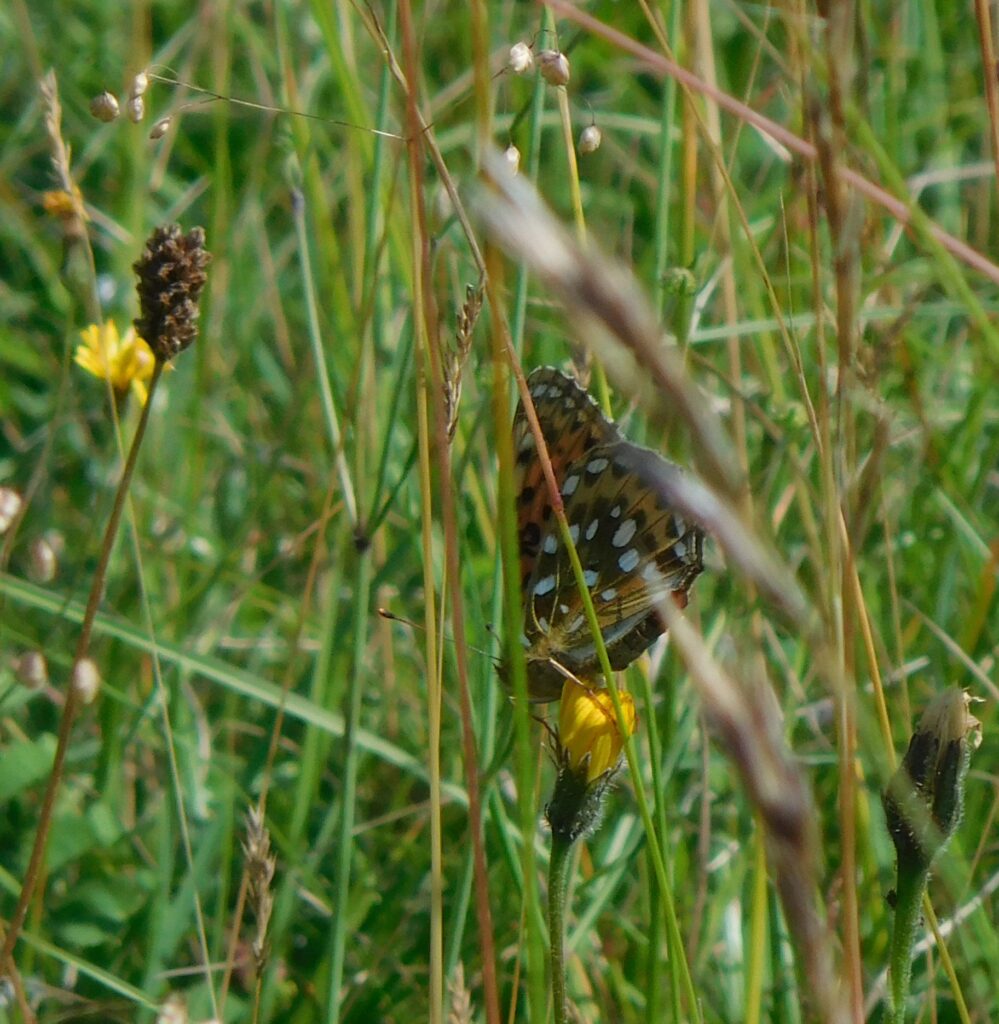
There were also Small Whites, Meadow Browns, Gatekeepers, Small Skippers, and possibly Chalkhill Blues about.

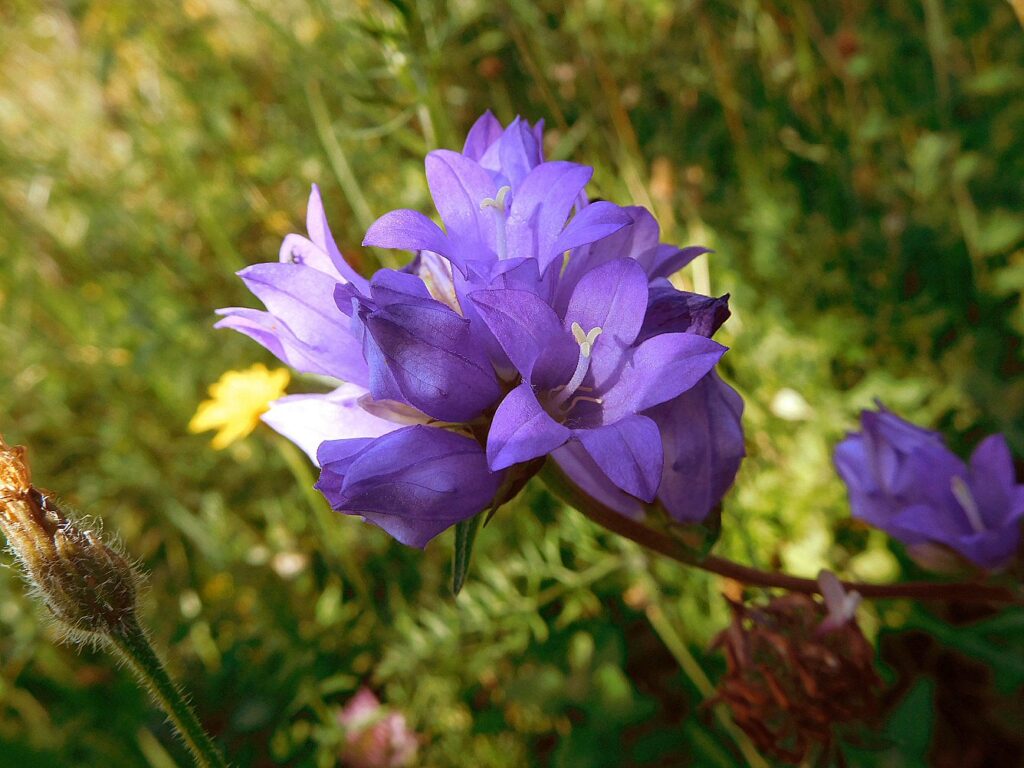











There were also Small Whites, Meadow Browns, Gatekeepers, Small Skippers, and possibly Chalkhill Blues about.


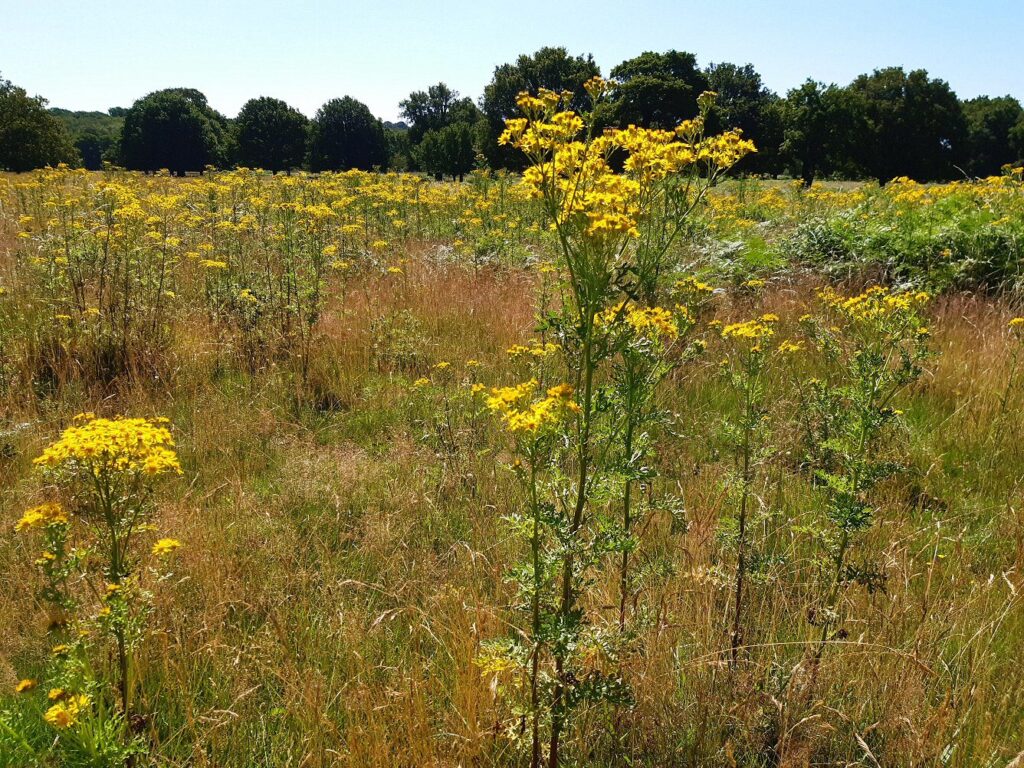
Ragwort by the thousand … and as yet hardly any Cinnabar Moth caterpillars. But I’m getting ahead of myself.
Ragwort is not just a common weed, but a curious one. It used to be a Notifiable Weed to the Ministry of Agriculture and Fisheries (more Ag. than Fish., probably). This was because it gave livestock that incautiously ate it, fresh or in hay, a violent stomach upset and sometimes caused death. So, farmers were obliged to report it and destroy it.
Why so dangerous? It contains Cardiac Glycosides, yup, chemicals that interfere with heart rhythms. Presumably natural selection has favoured this as animals end up not eating too much of the plant, which favours its survival. That includes cows and most insects.
However, a few beasties can tolerate the poison; and the Cinnabar Moth is one such. Actually, it goes a step further — it benefits from the stuff. Its caterpillars are large, conspicuous, and slow-moving; they’re also striped brilliant orange and black, warning coloration. That says “eat me, you’ll regret it”, and it’s an honest signal; any bird that tries it will indeed be violently sick, at least, and won’t try eating larvae that look like that again. Ever.
However however, one bird can tolerate the poisonous caterpillars: the Cuckoo. It arrives and feasts on the conspicuous and presumably delicious, nutritious larvae which nobody else will touch with a bargepole and rubber gloves.
Even more however, there’s a catch. The caterpillars are Very Hungry (this is a literary reference). They munch through the Ragwort like there’s no tomorrow, until it’s all gone. Then they pupate, turn into beautiful cinnabar-red and grey adults, lay eggs, and die. The Ragwort is already dead, obviously. And Cuckoos and everyone else who comes alone the next year won’t find a Ragwort plant or a Cinnabar moth for love nor money.
Then, gradually, a few surviving seeds grow into Ragwort plants. There are no Cinnabar caterpillars to do the damage on them. They go forth and multiply, as the bible has it. After a year or two there are Ragwort to the Left, Ragwort to the Right, and Ragwort all around. The man at the Min. of Ag. and Fish (or whatever it’s now called) spends all day answering phone calls about Ragwort (only he doesn’t, he’s got fed up of doing it by now). The few Cinnabar caterpillars have food in plenty and they breed like rabbits. Well, like Cinnabar moths. And the cycle goes round again.
So there you have it. Plague of Ragwort? Don’t tell the Ministry, but do wonder at the power of Nature.
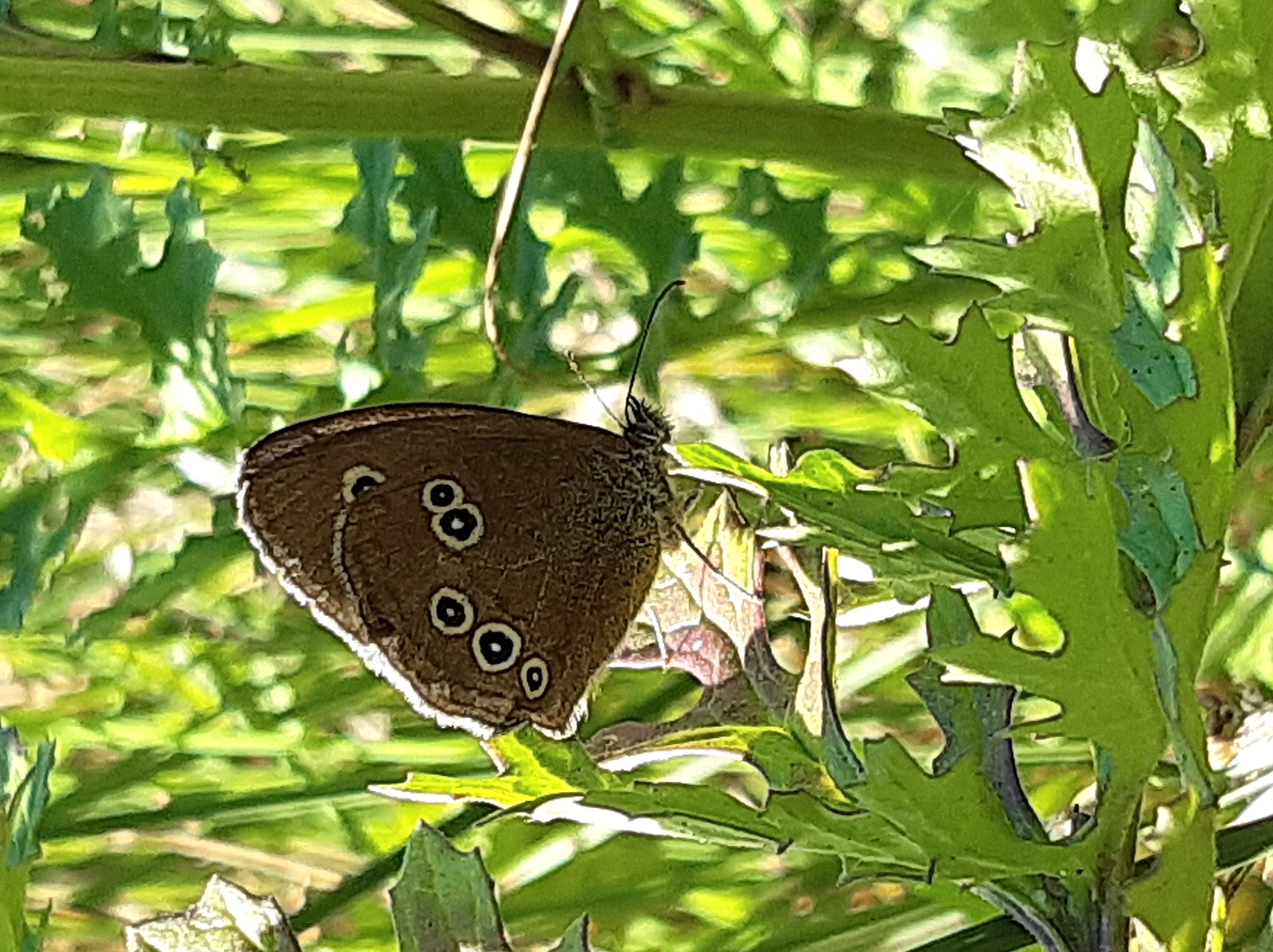
P.S. It was a lovely day for butterflies, too, with Small Coppers nectaring on Ragwort flowers; Ringlets by the Pen Ponds; Small Heaths knocking seven bells out of each other; and (Cabbage) Whites and Red Admirals about too. Grasshoppers skipped about; a Lizard ran across a path into the grass. A big flock of Canada Geese, with a few Greylags, grazed peacefully. Ants rebuilt their flooded-out nests.
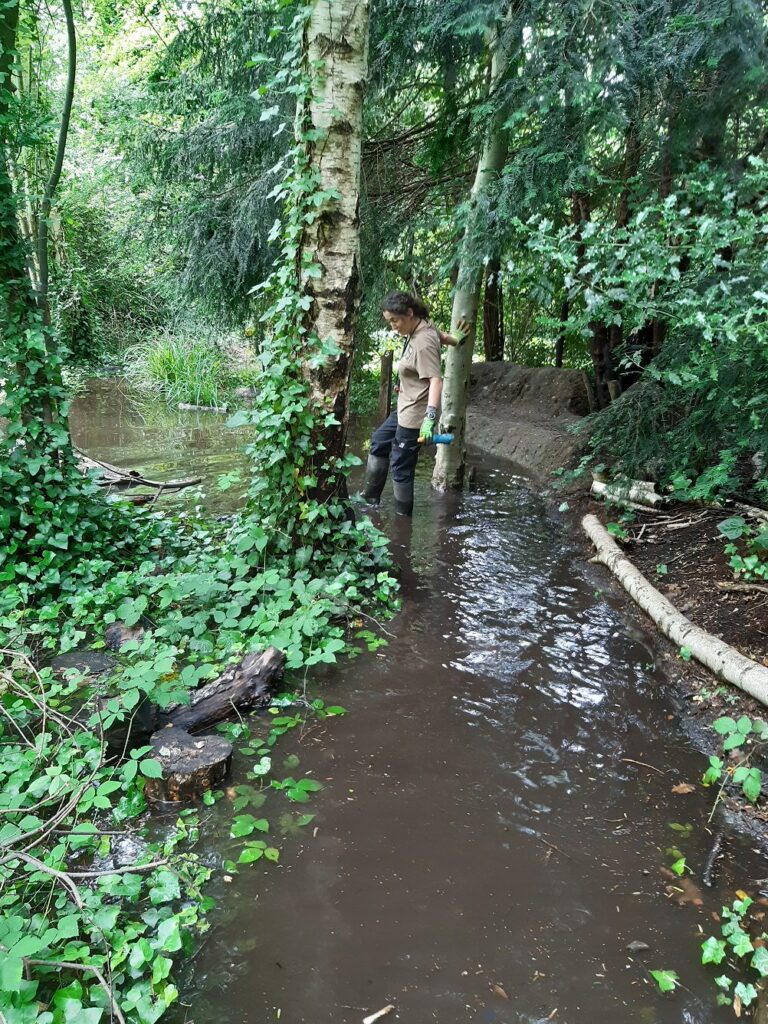

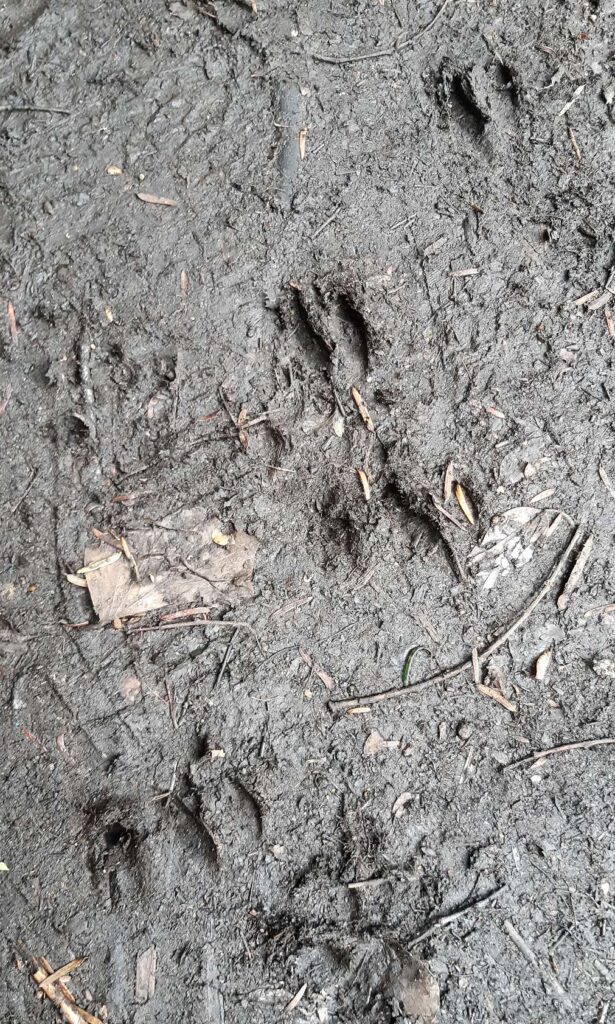
Well, quite the summer surprise: after all these years, none of us had ever seen or heard of a deer in the little urban reserve. But this weekend a visitor shyly checked with the warden whether they could have seen a deer; and a volunteer met the Muntjac, though they didn’t have a camera. Today, the deer had left some fine prints — indeed, trails — in the soft earth on various sections of path. The small size of the prints, and the pointed, cloven hoofs, leave no doubt whatsoever which species made them.
We’re preparing a Nature Trail with little wooden boards for children to find. So Muntjac prints can feature among the other mammal (and maybe bird) footprints that we see on the reserve.
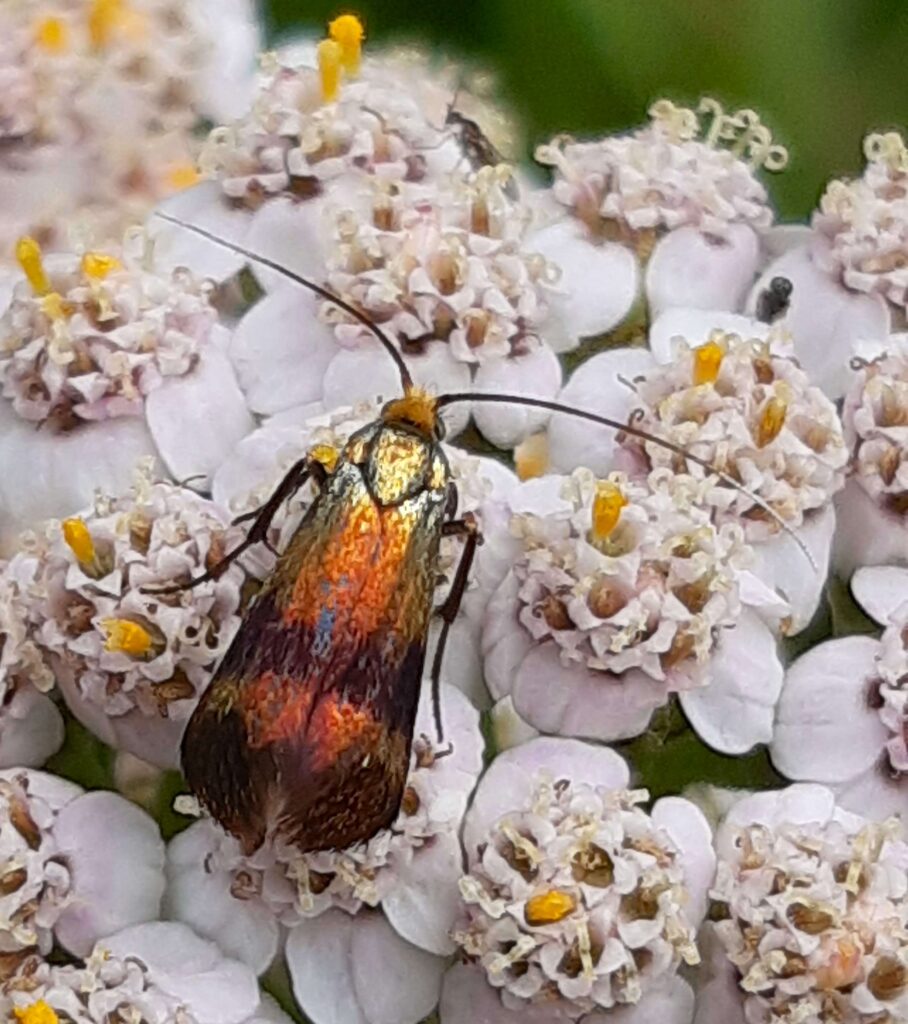
A beautiful shiny Tortricid micro-moth on Hogweed
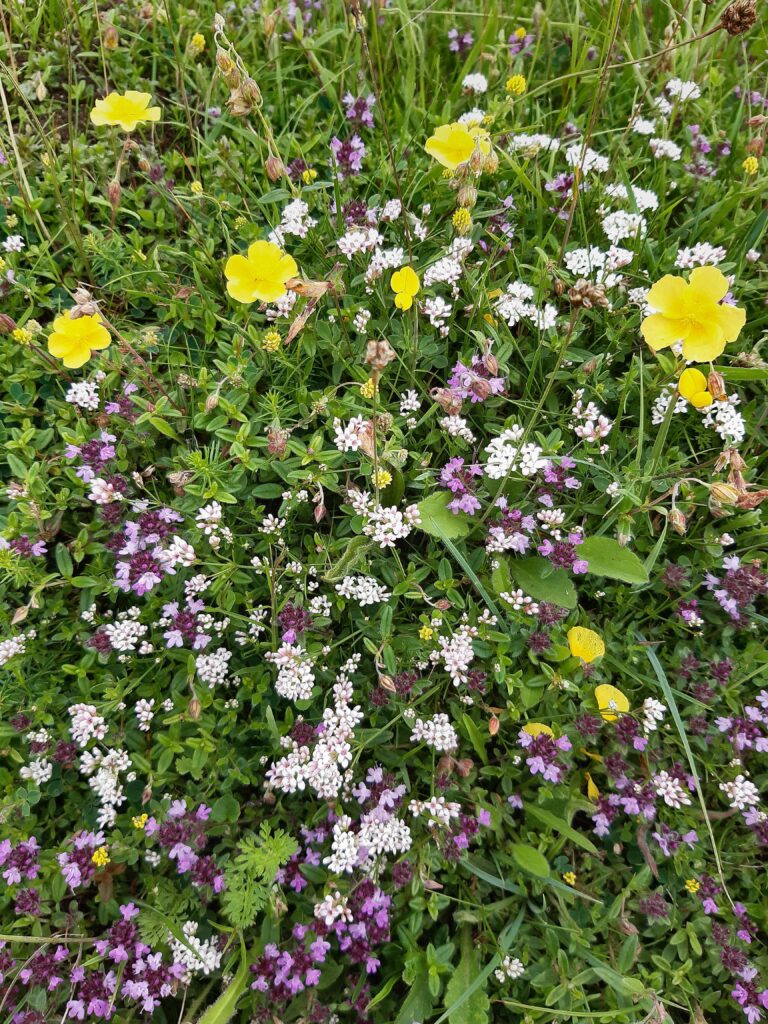
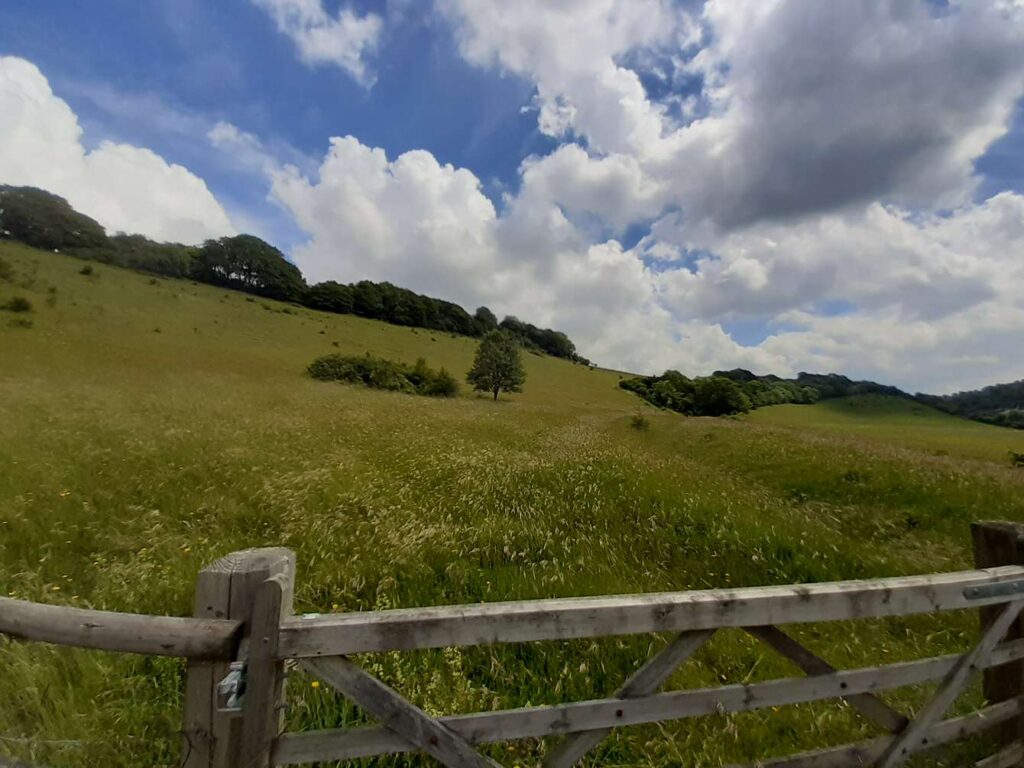
Well, this strange year – a cold dry April when the bees could hardly feed for lack of pollen and nectar; the wettest May anyone can remember; and now a June so late that cherries, raspberries and redcurrants are ripening all together. In some recent years, the end of June would have been too late for many flowers, specially on Aston Rowant’s steep, free-draining Chalk Grassland.
But not this year: it’s like Tolkien’s The Shire after Sam Gamgee has returned victorious and sprinkled the magic grains of earth from Galadriel’s Elvish Garden in all his favourite spots, and everything is glorious with colour, buzzing with bumblebees, and glittering with iridescent green Forester Moths, Thick-Kneed Flower Beetles, and astonishingly shiny Hawkweed Leaf Beetles.
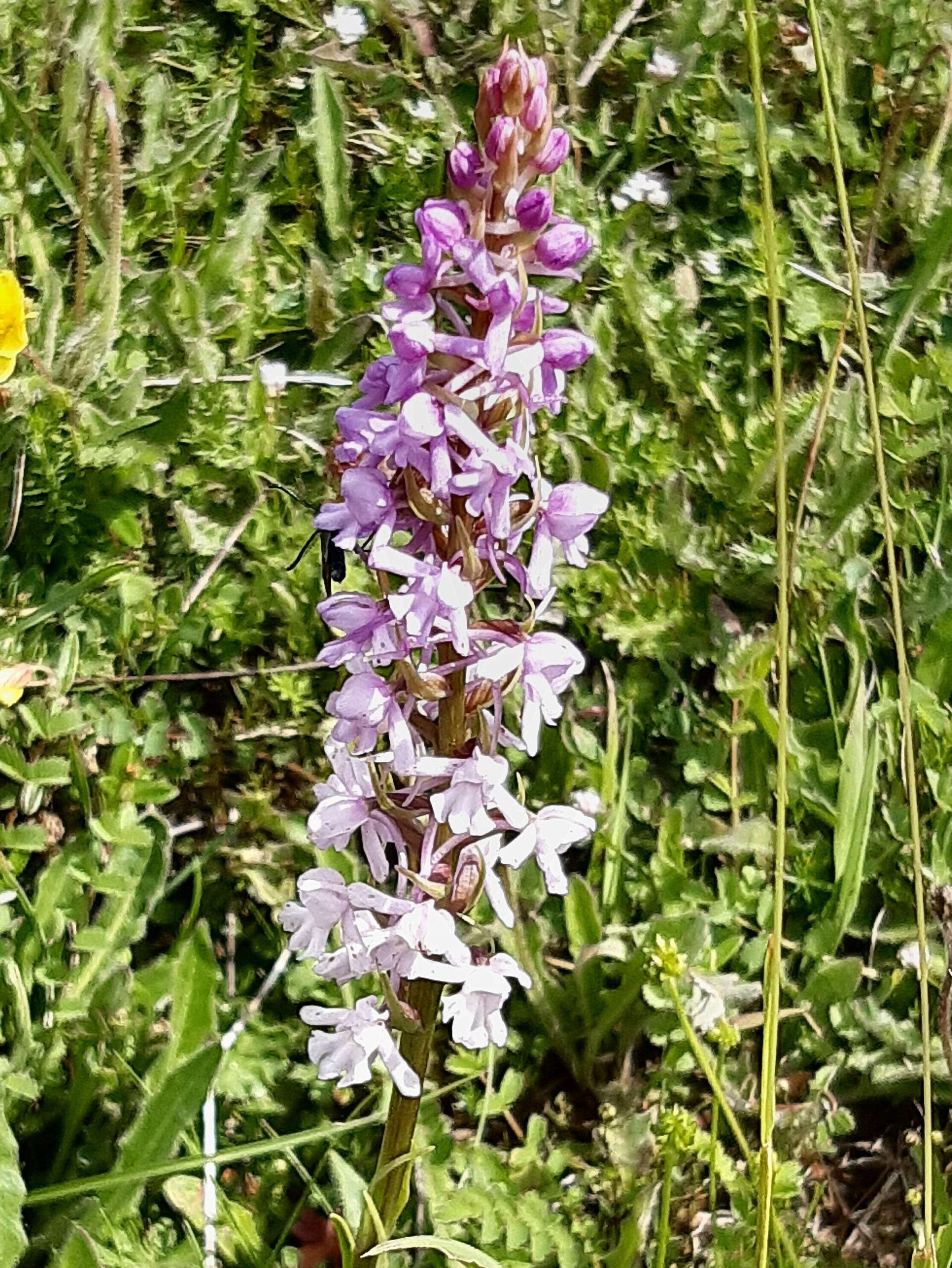
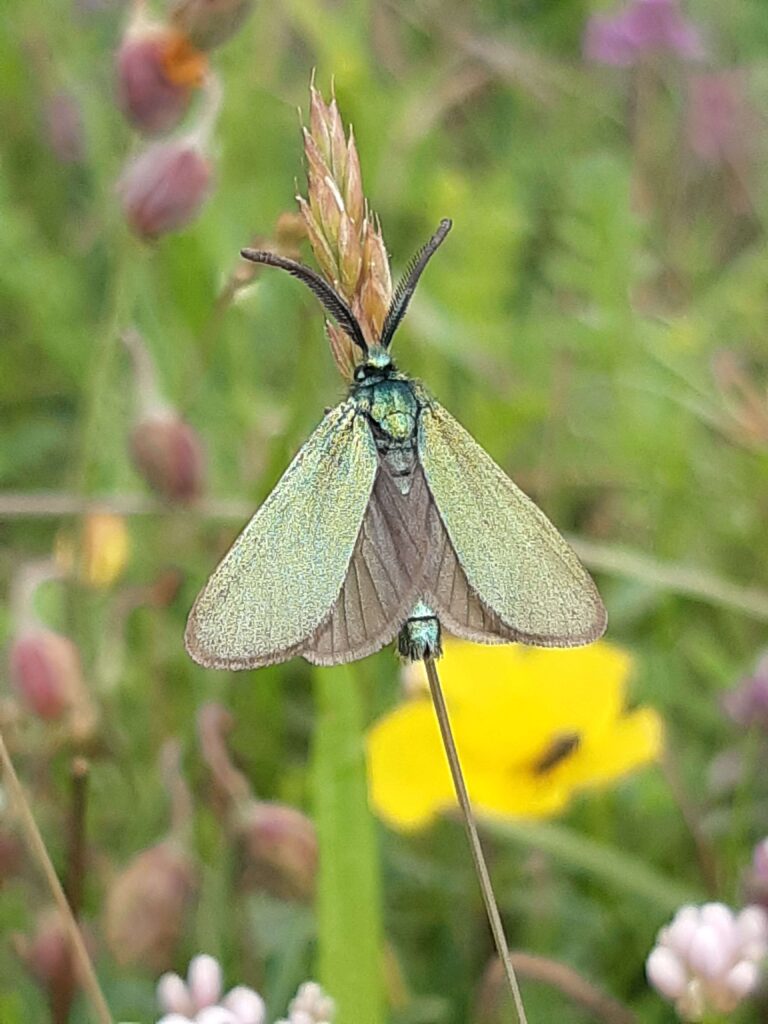
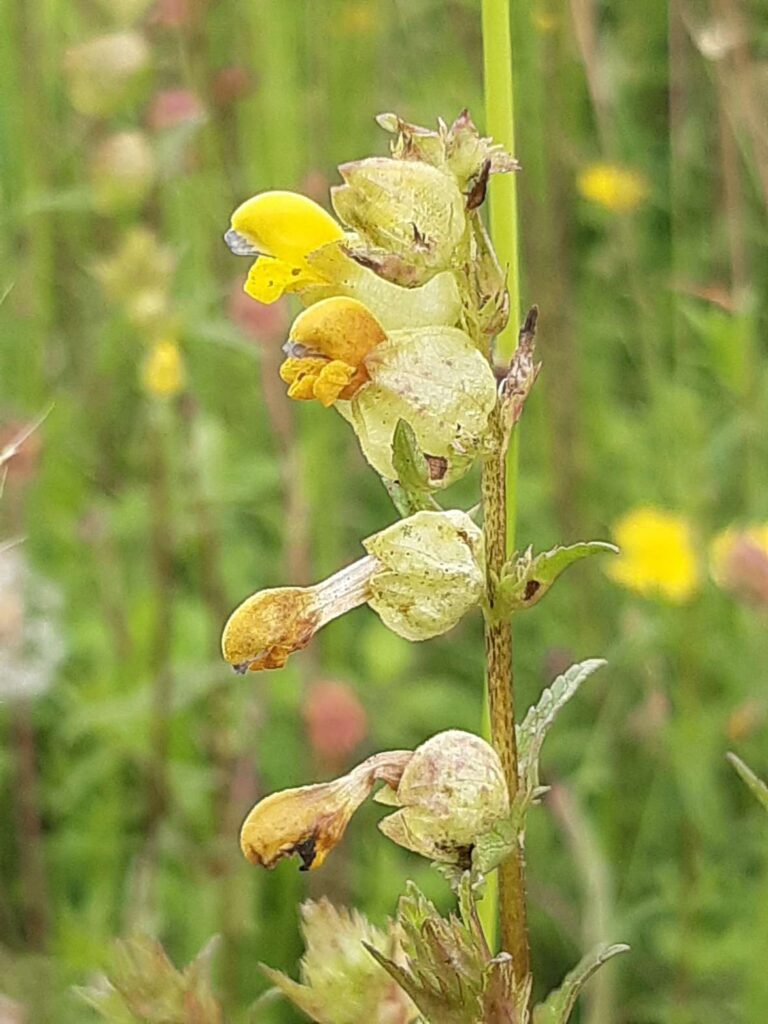
This curious little flower in the Broomrape family, Yellow Rattle, may seem to be just an oddly-shaped herb; but it’s critically important to the flowery meadow ecosystem. It doesn’t have much in the way of green leaves, as it’s a parasite: its roots attach to nearby grasses, extracting the food it needs to live, and in the process weakening the grasses all around it. Result? Tall tough grasses that would otherwise crowd out and overwhelm their attractively coloured neighbours are suppressed, and a wealth of insect-pollinated flowers can, well, flourish. That doesn’t mean the area can just be left to look after itself: Hawthorn and other shrubs would quickly take over and turn the place into forest, so carefully-planned grazing is necessary to keep the land at the meadow stage. It’s called Rattle, by the way, because the ripe seeds dry out and rattle inside the leafy fruit capsules when the plant is shaken.
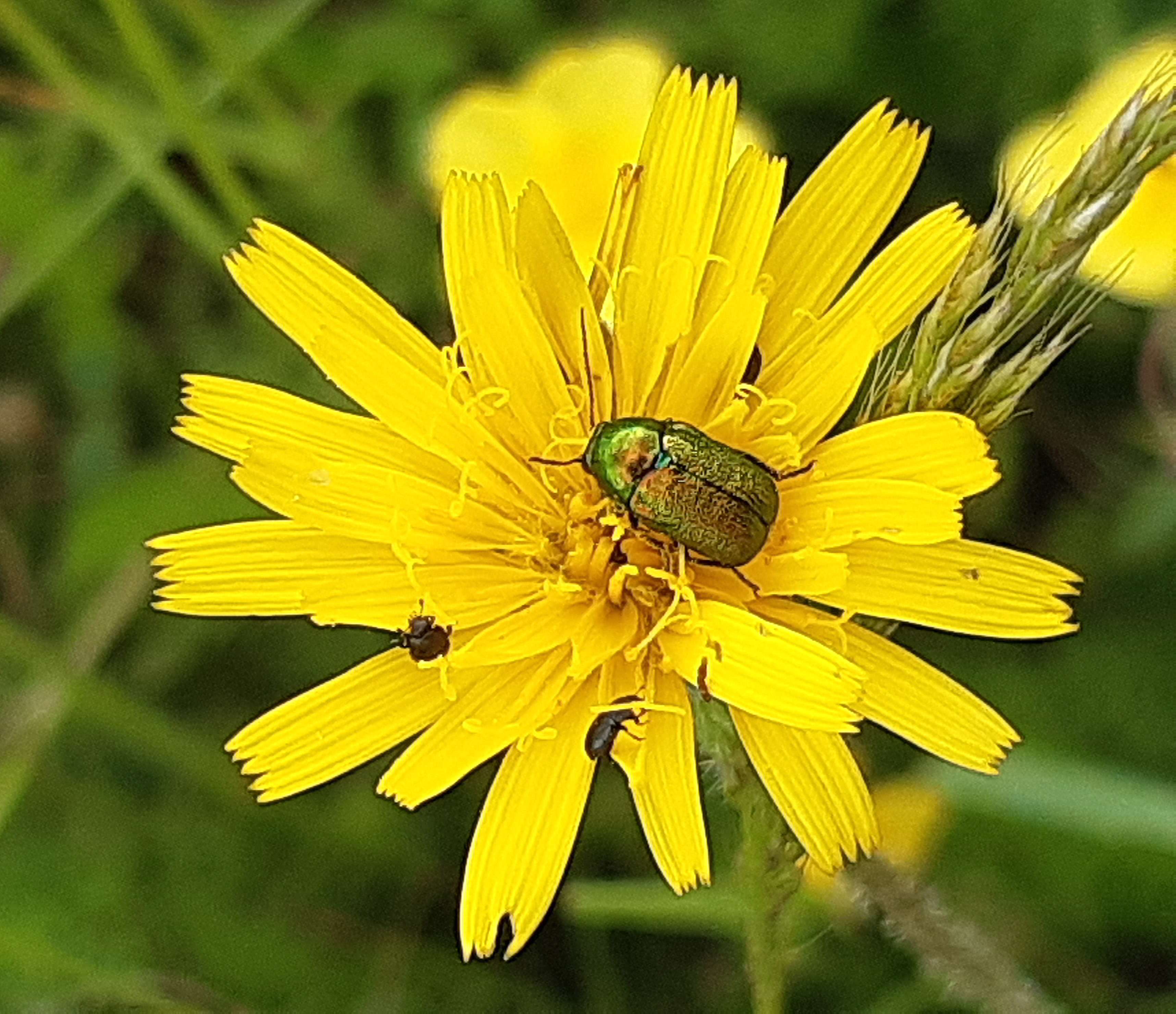
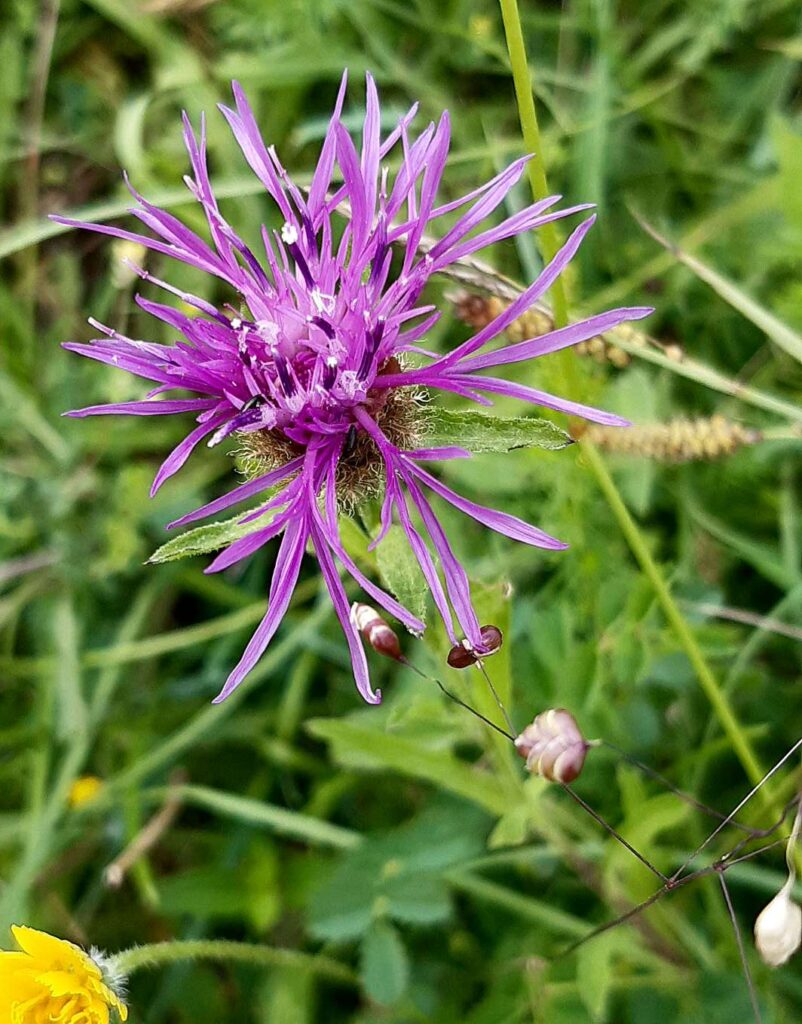
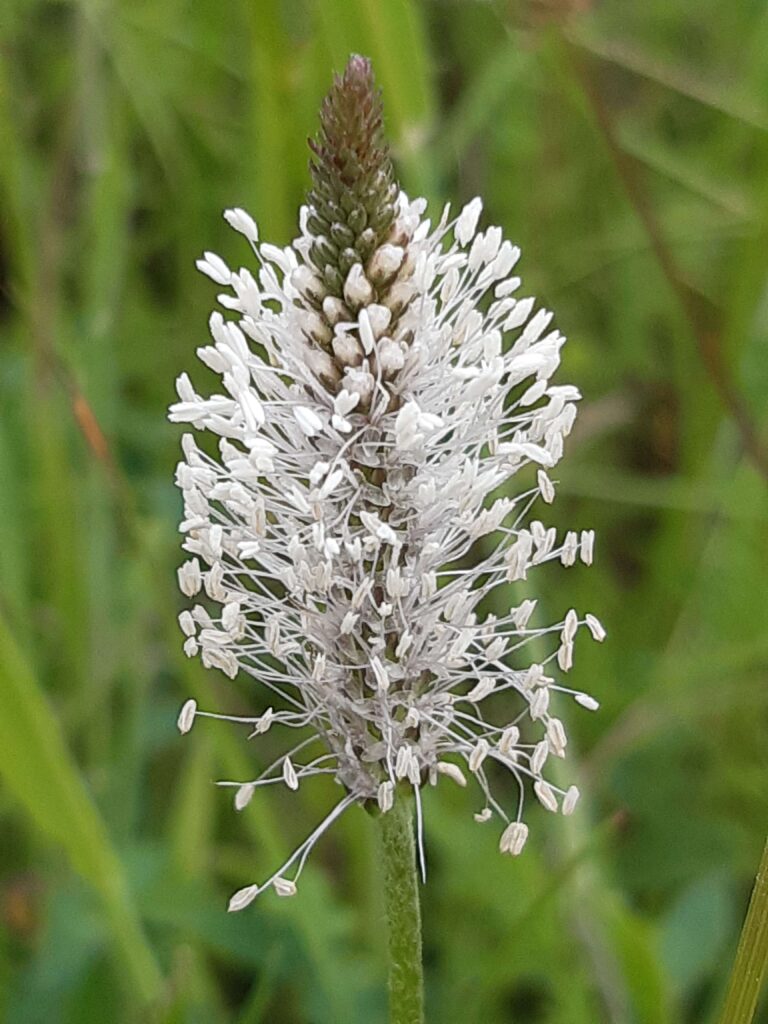
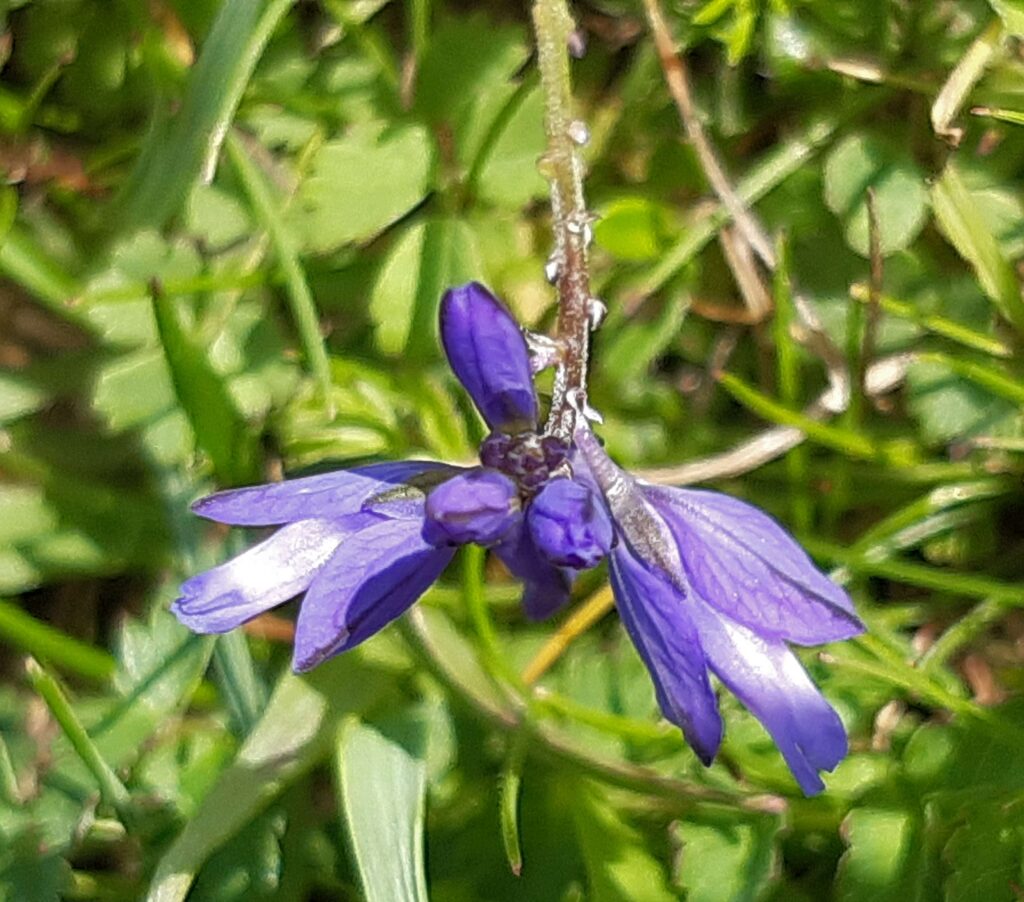
This small flower was once common in meadows, indeed its name tells its story: it was found wherever milk cattle grazed, in all Britain’s meadows. Now in lowland Britain at least, it’s a rare and special sight, and we feel excited and happy to see it: such is the scale of the catastrophe that has overtaken our countryside. Basically, the flowers are almost all gone; so are the insects; and the birds are fast following them. A place like Aston Rowant is indeed special: its warm, south-facing chalk slopes really were always a wonderful place for flowers like the Chiltern Gentian and butterflies like the Adonis Blue, and happily it still is; but it’s now special just for being what our grandparents would have seen as ordinary: it’s full of what they knew as common wild flowers “of wayside and woodland”.
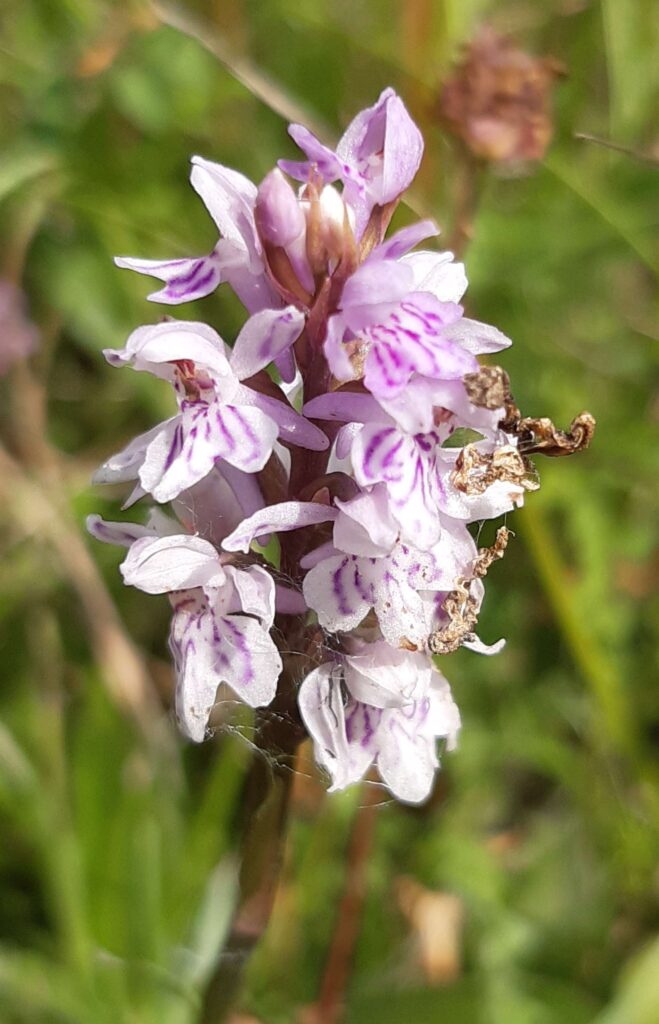
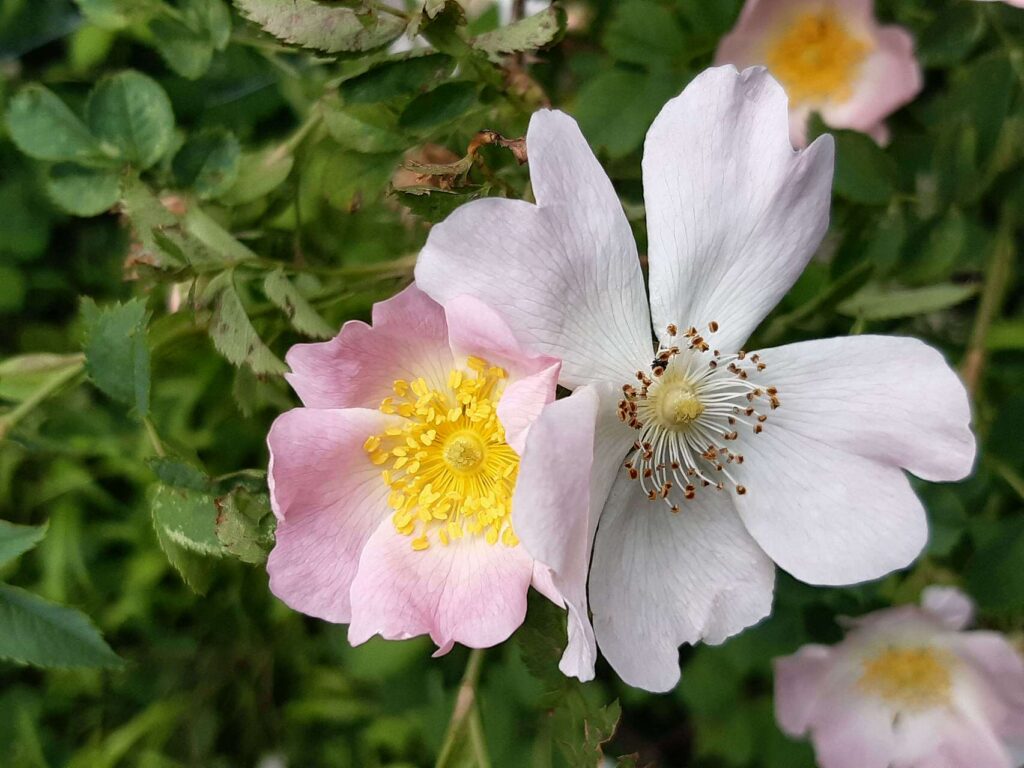
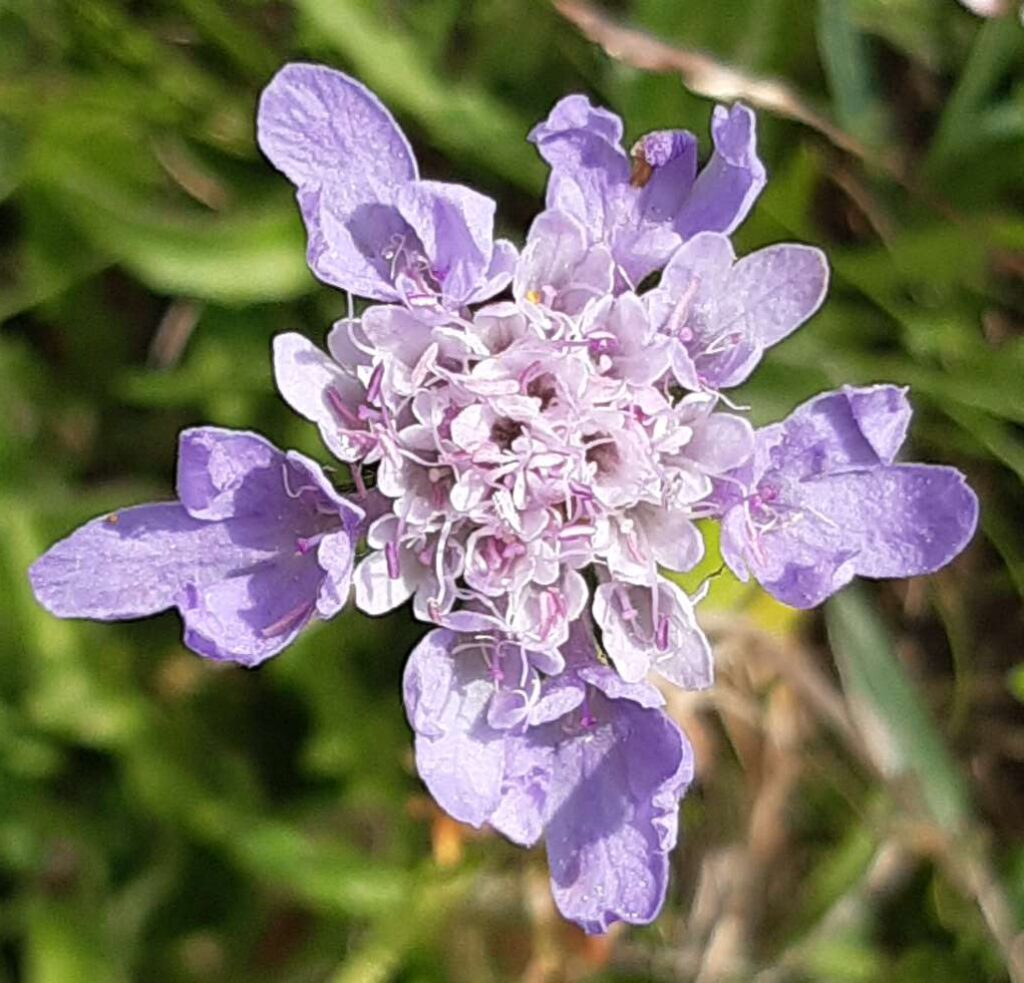
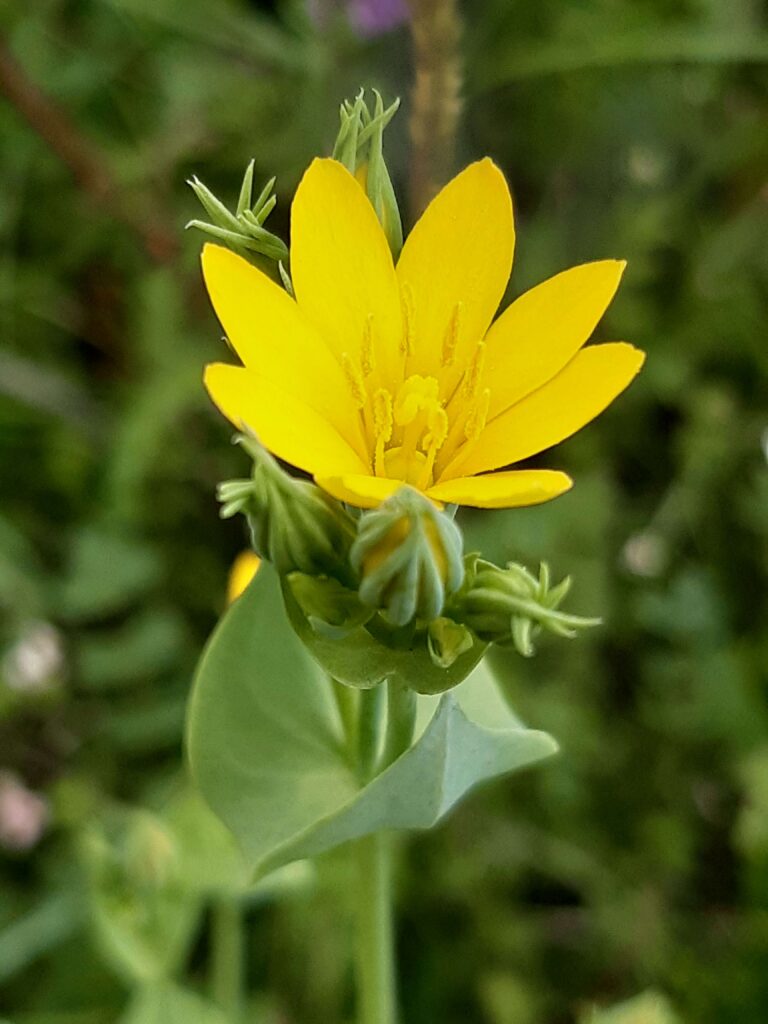
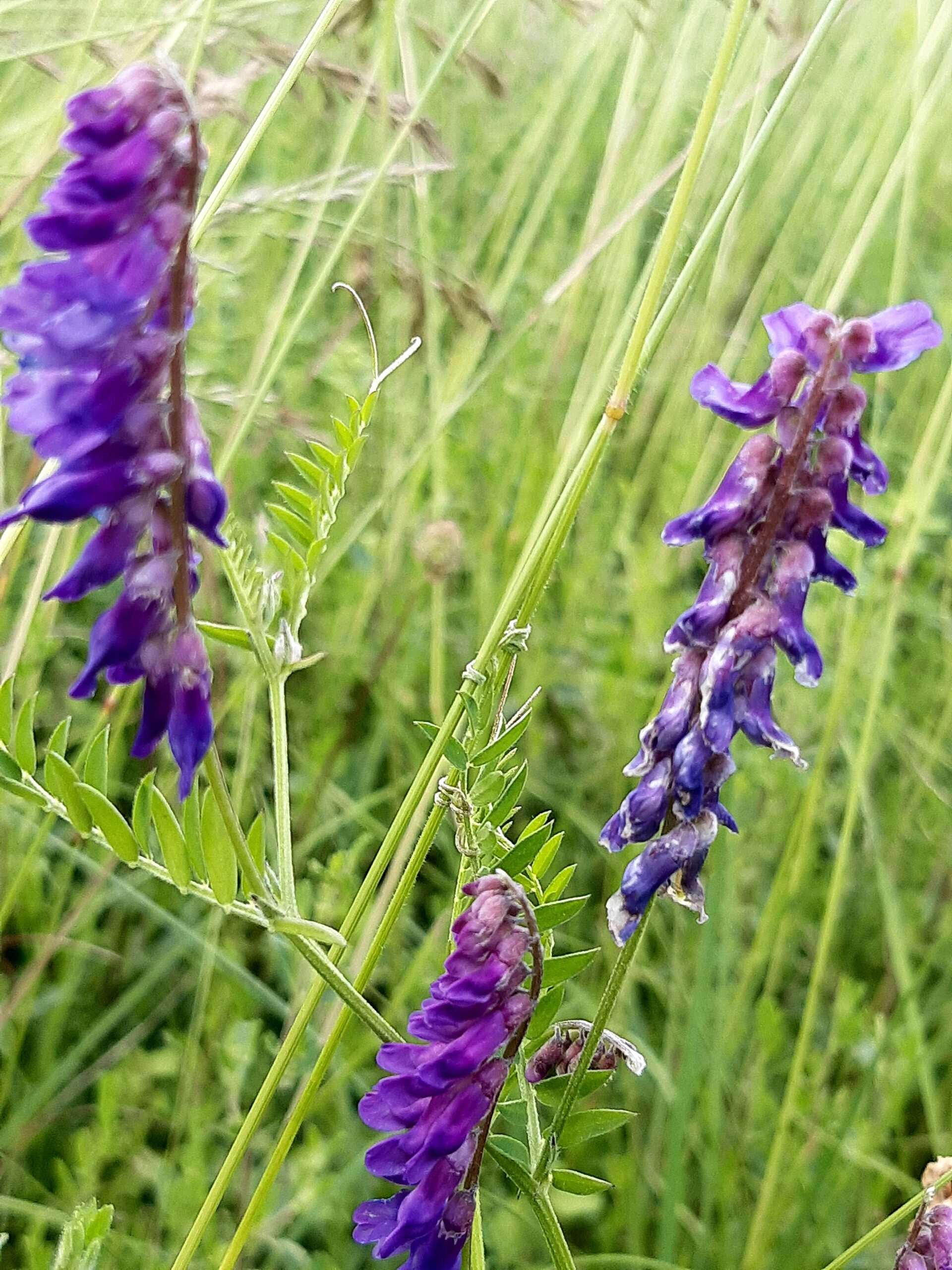
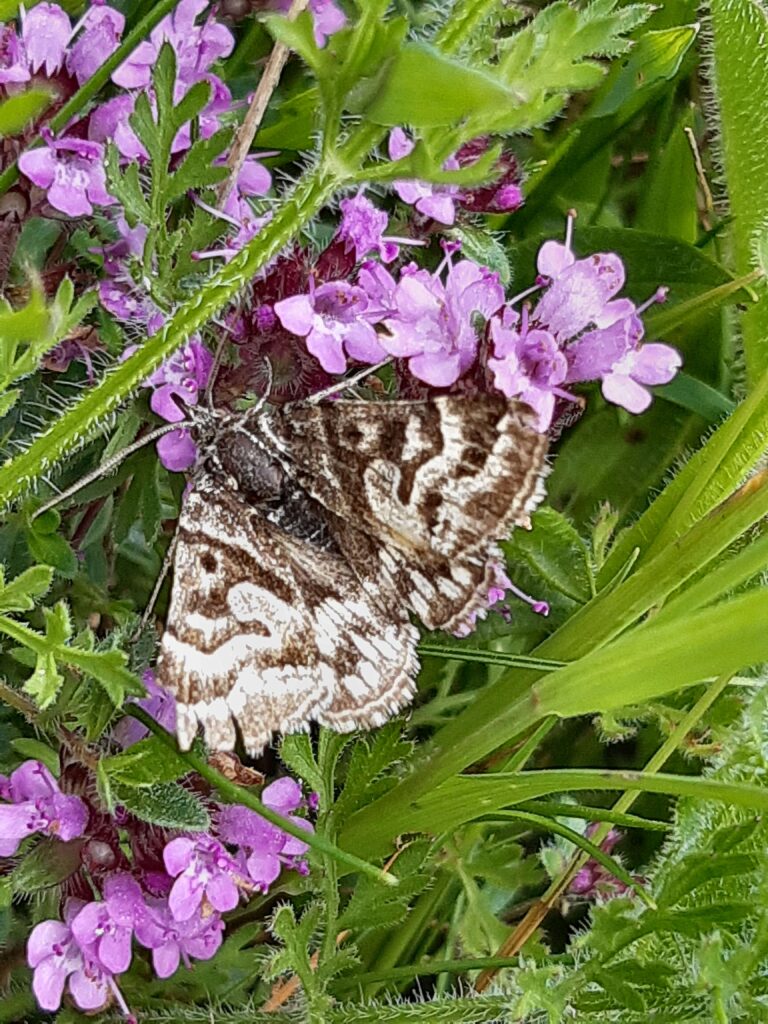
There weren’t many butterflies about – Meadow Browns, Common Blues, a single Marbled White very handsome with its dancing flight, a good number of Small Heaths up on the hilltop, a Red Admiral. It looks as if the difficult spring has meant low butterfly numbers this year.
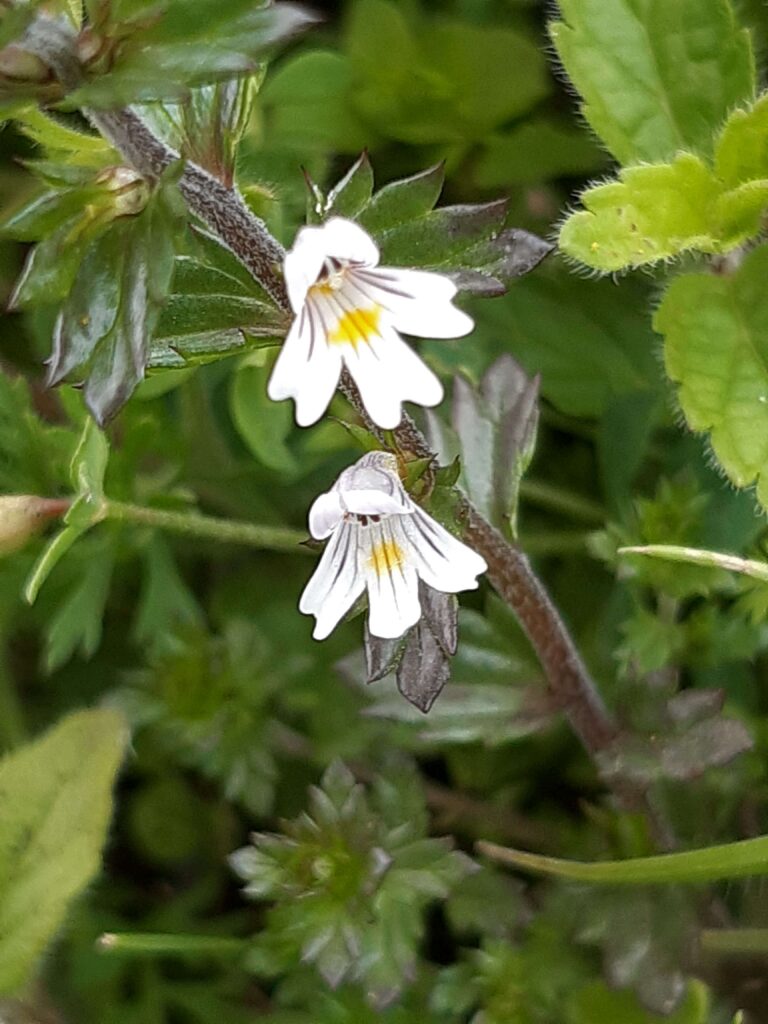
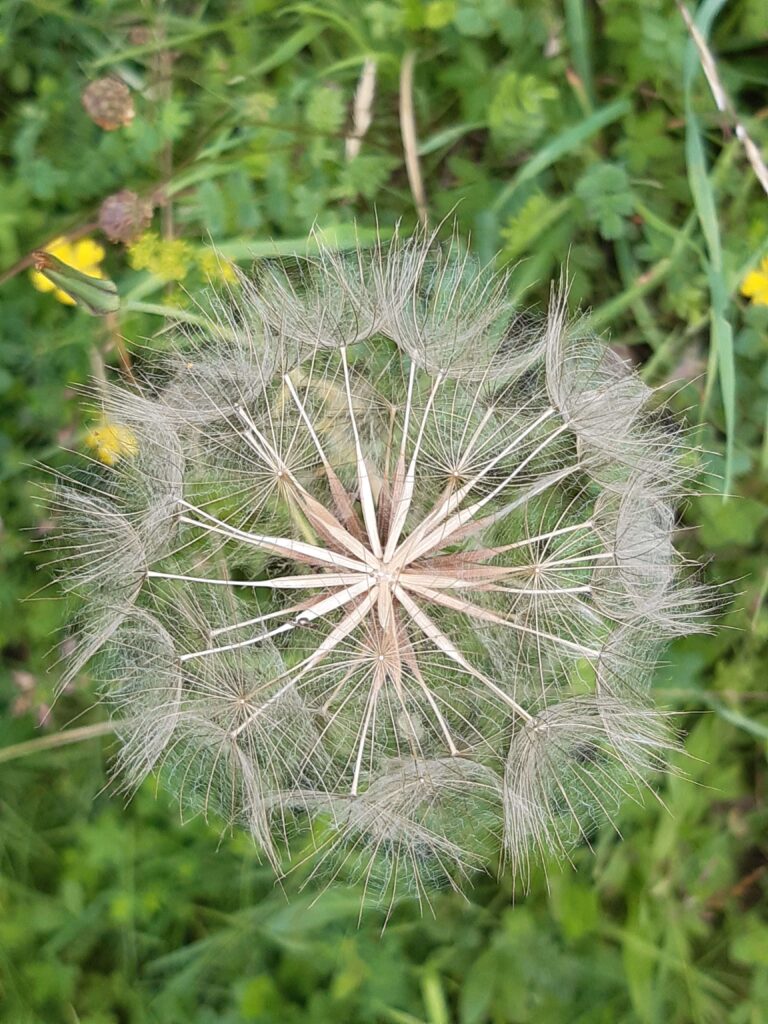
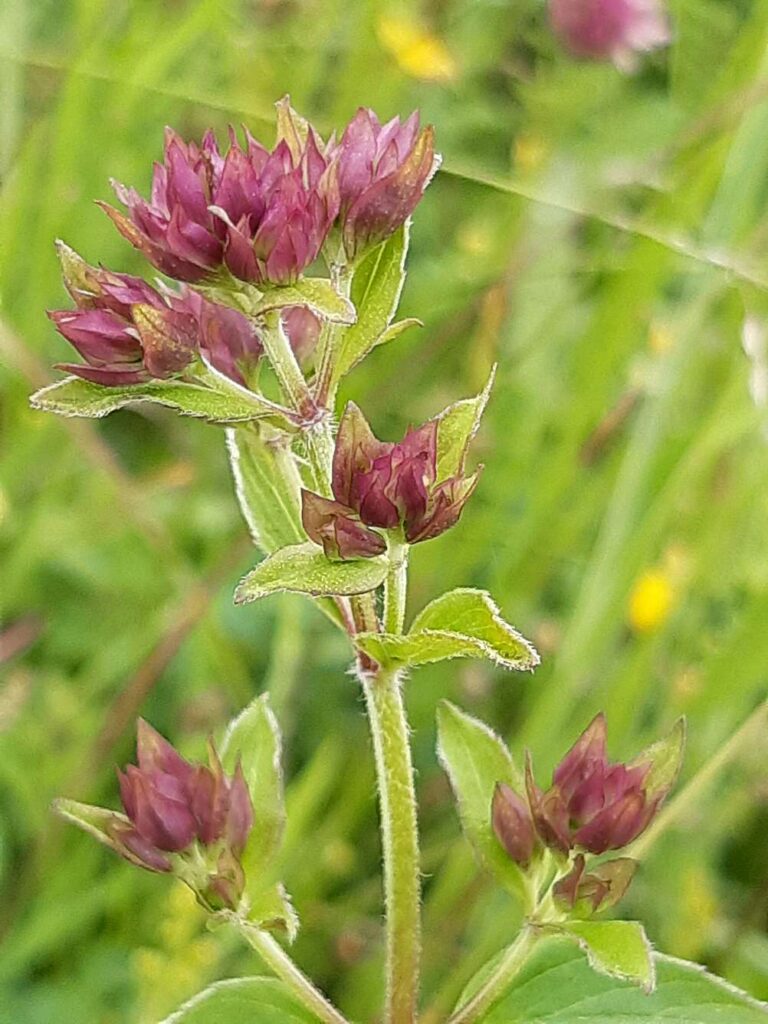
My 2014 blog on Aston Rowant, with a different selection of species (and some trenchant thoughts): http://www.obsessedbynature.com/blog/2014/06/18/aston-rowant-beautiful-brutalized/
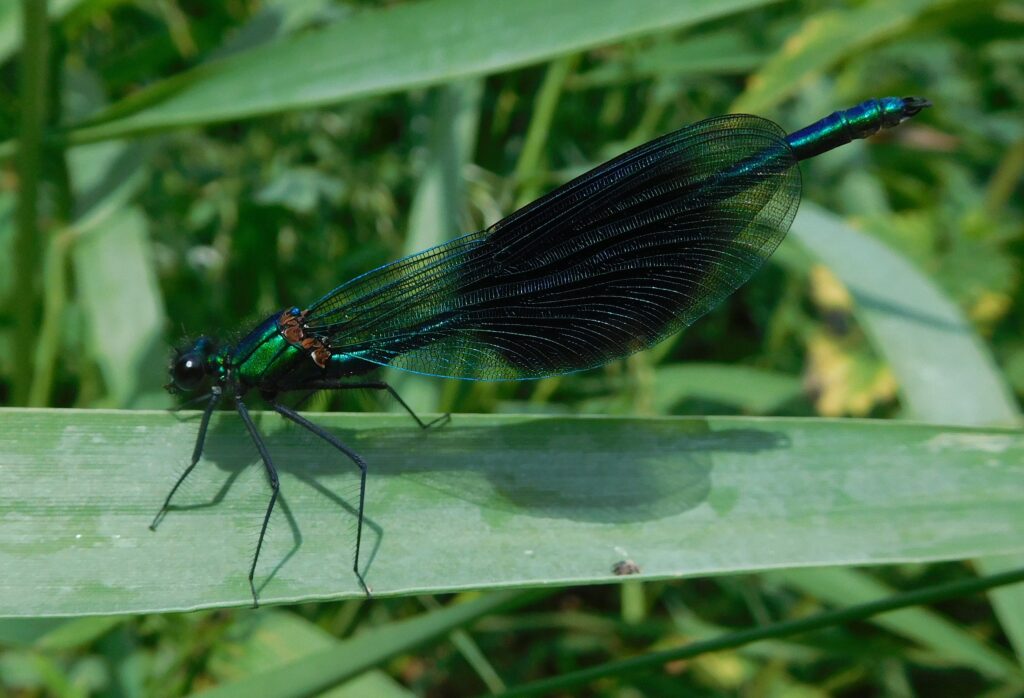

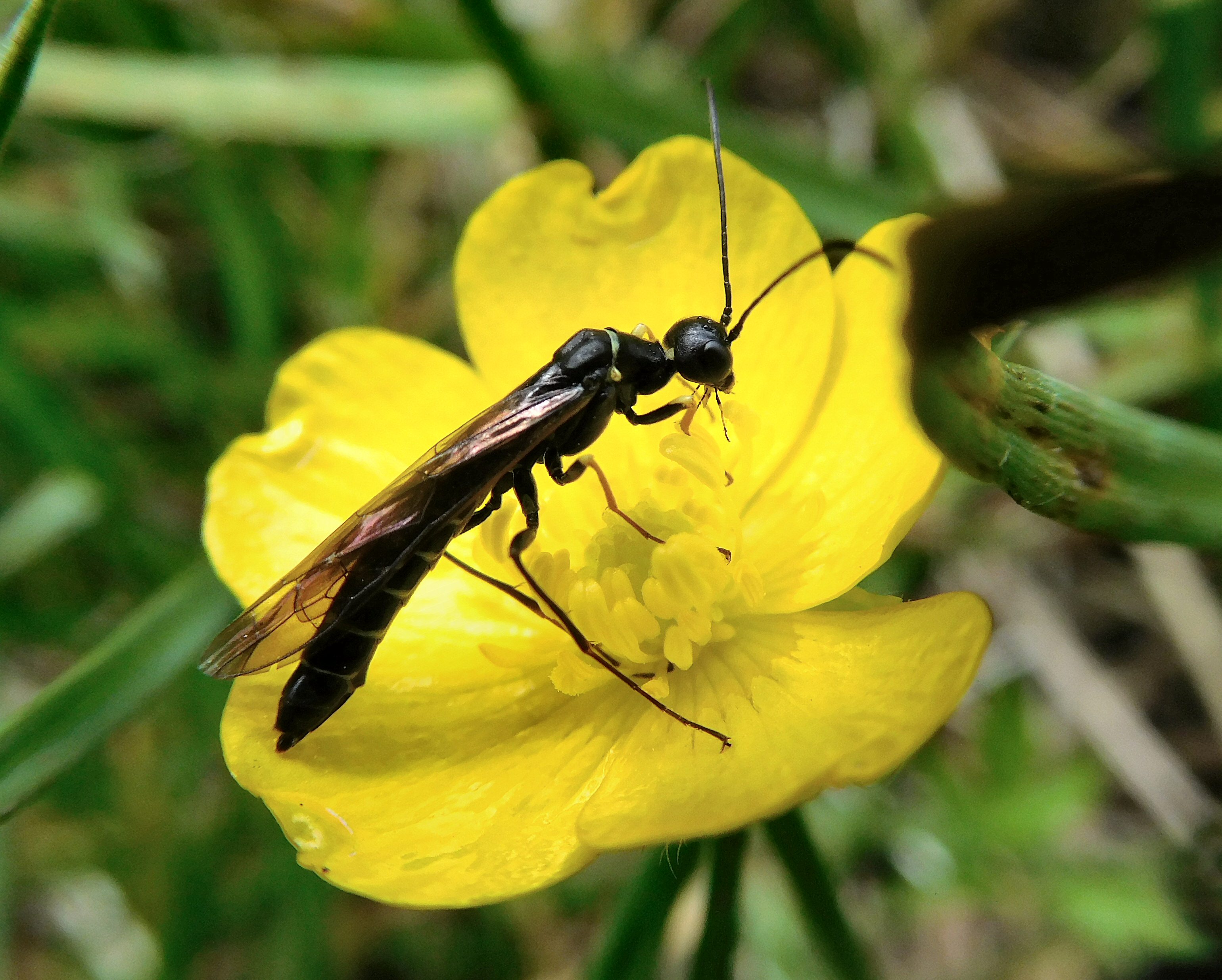
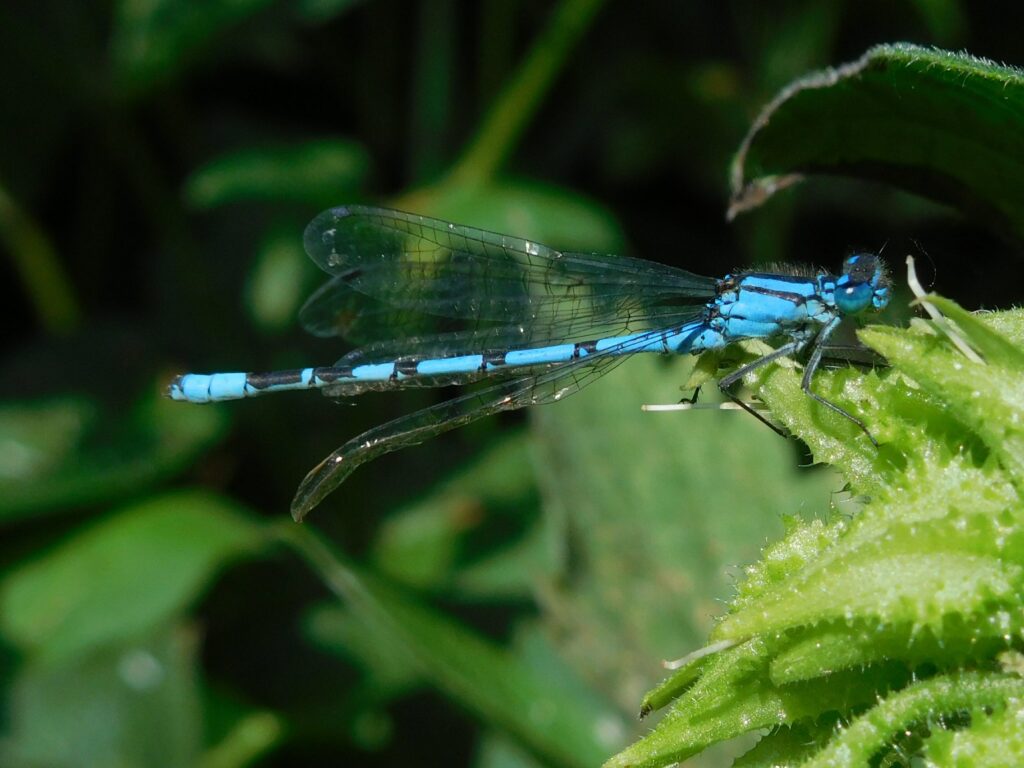
As well as these elegant and colourful insects, there were Red Admirals and Meadow Browns flying today, but overall very few butterflies.

